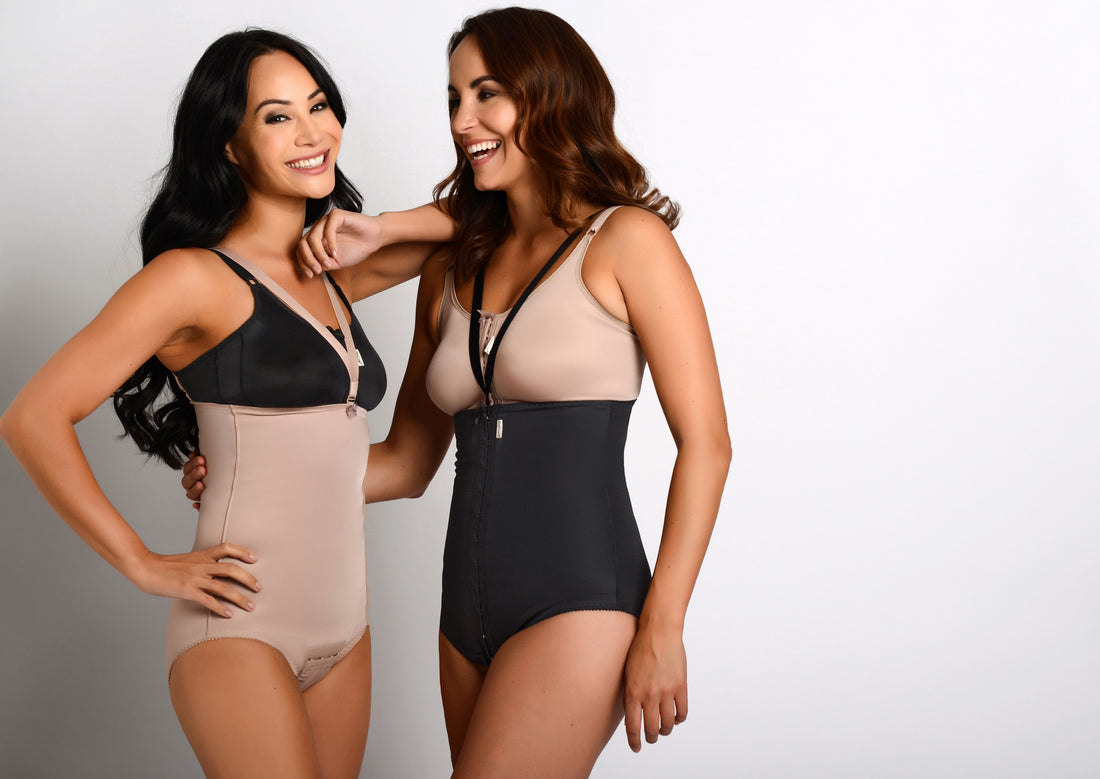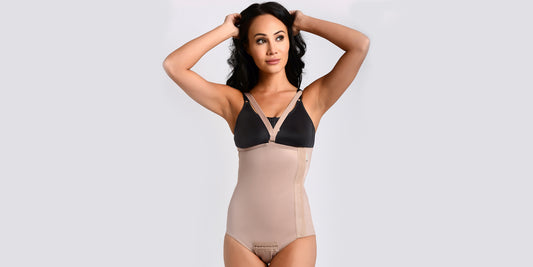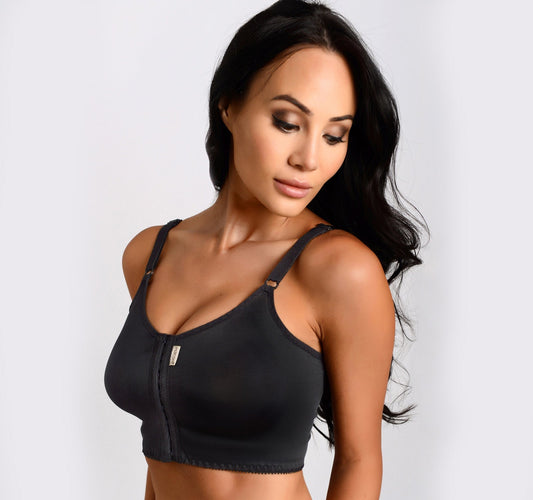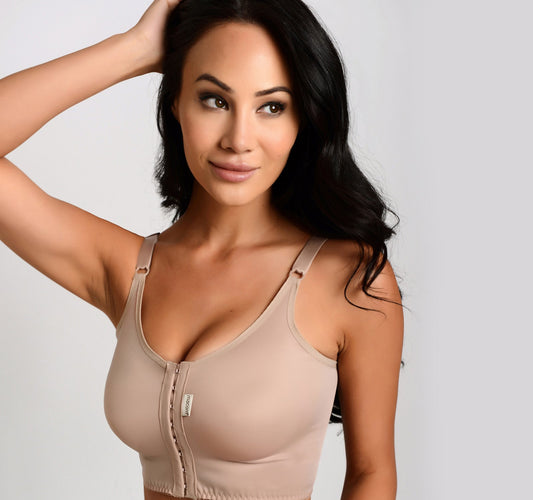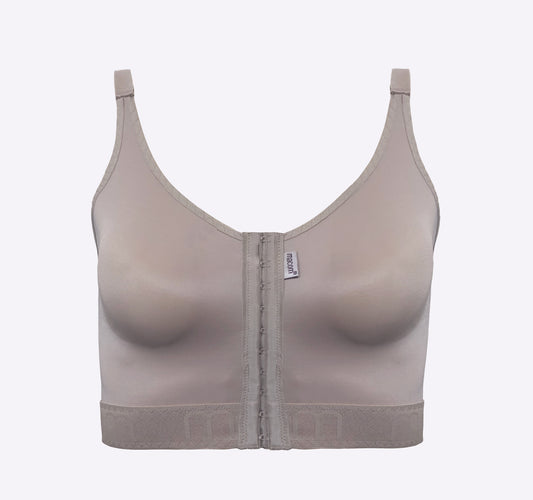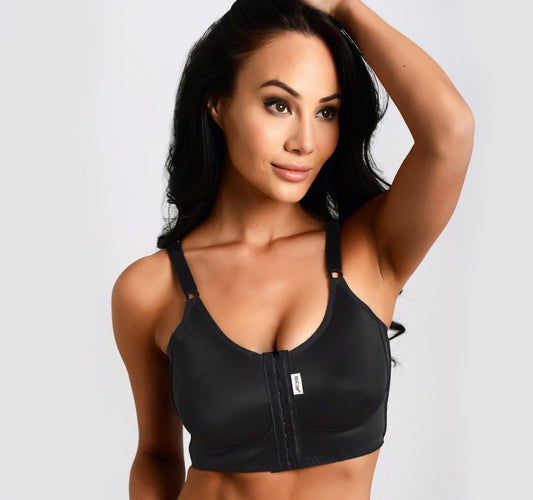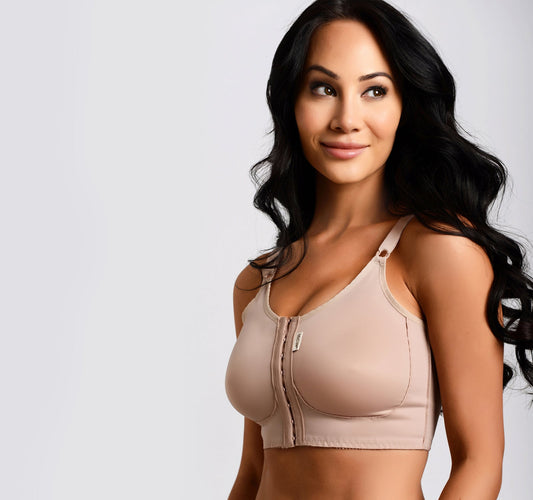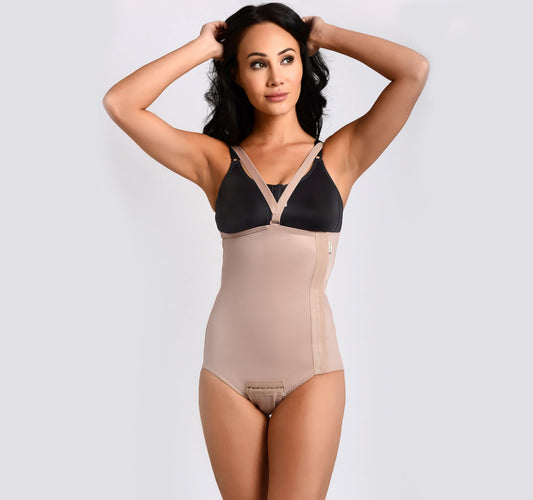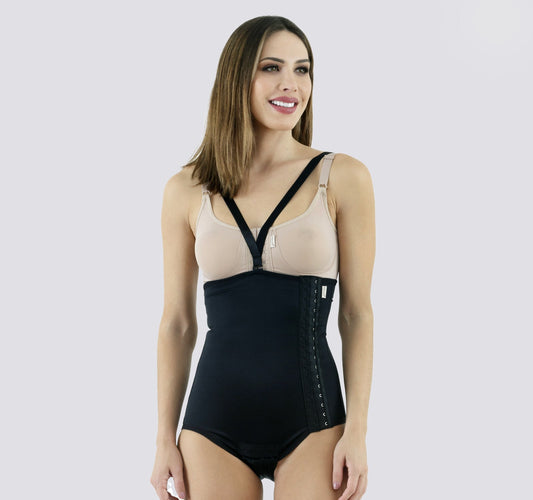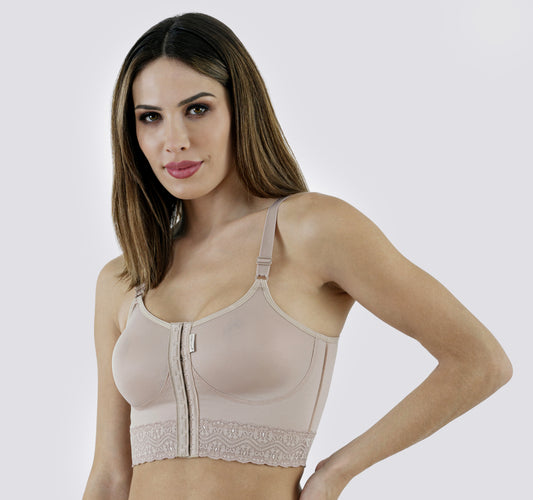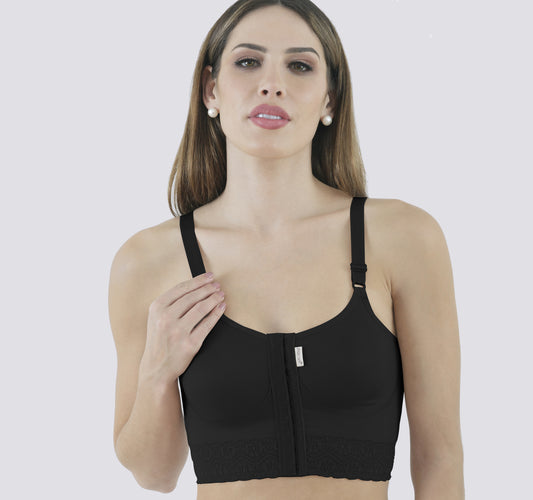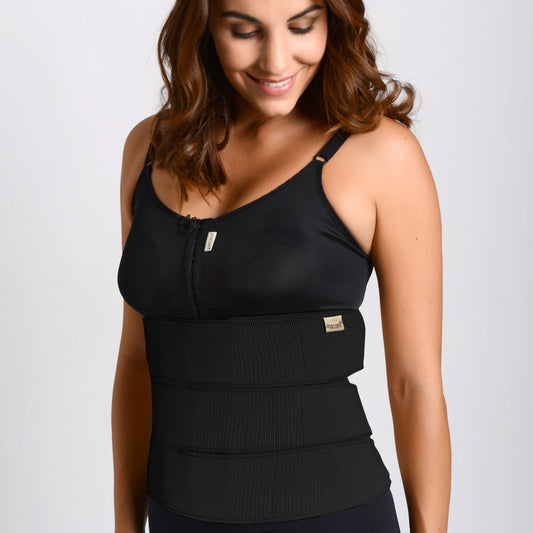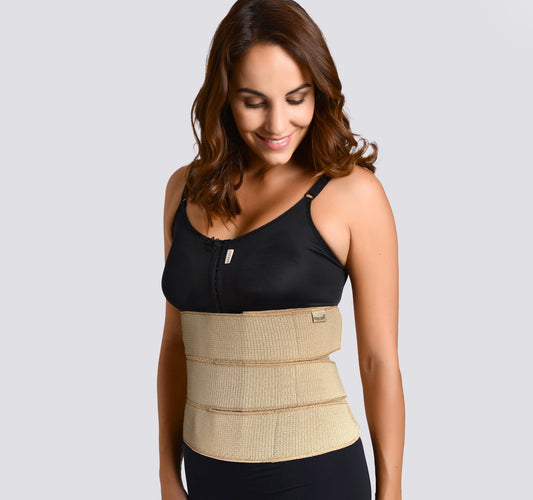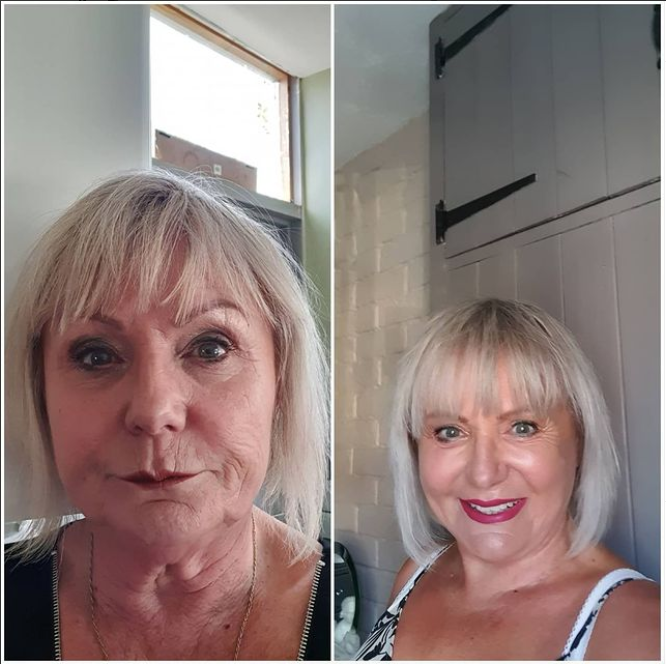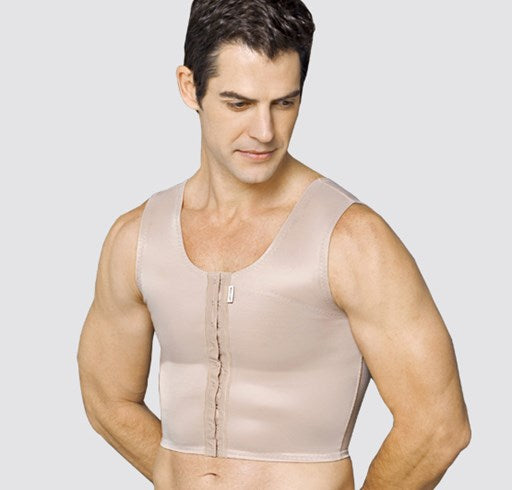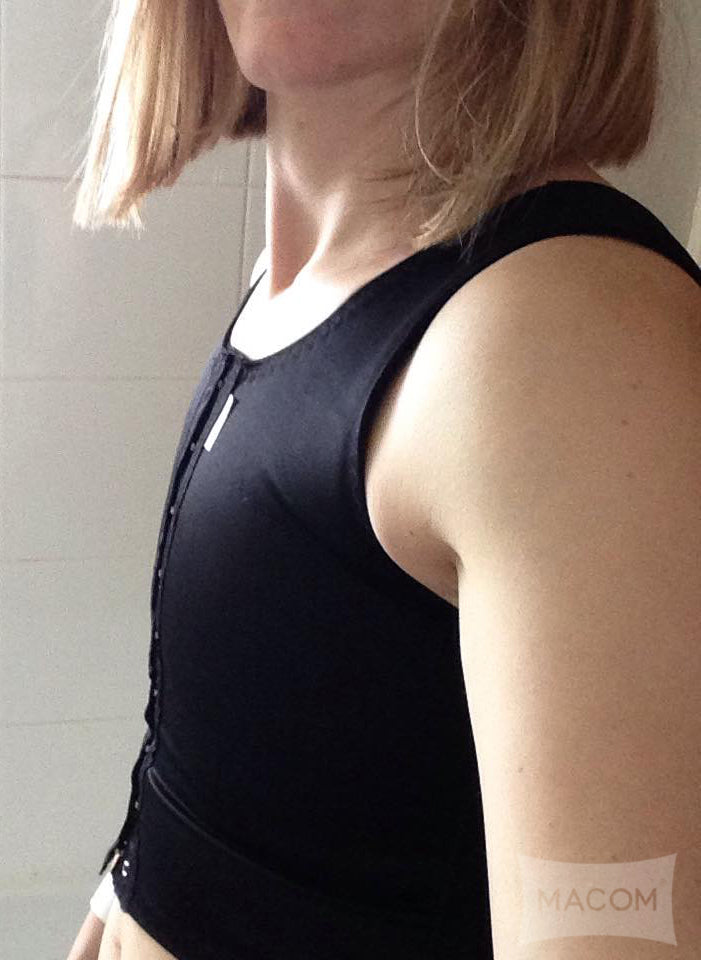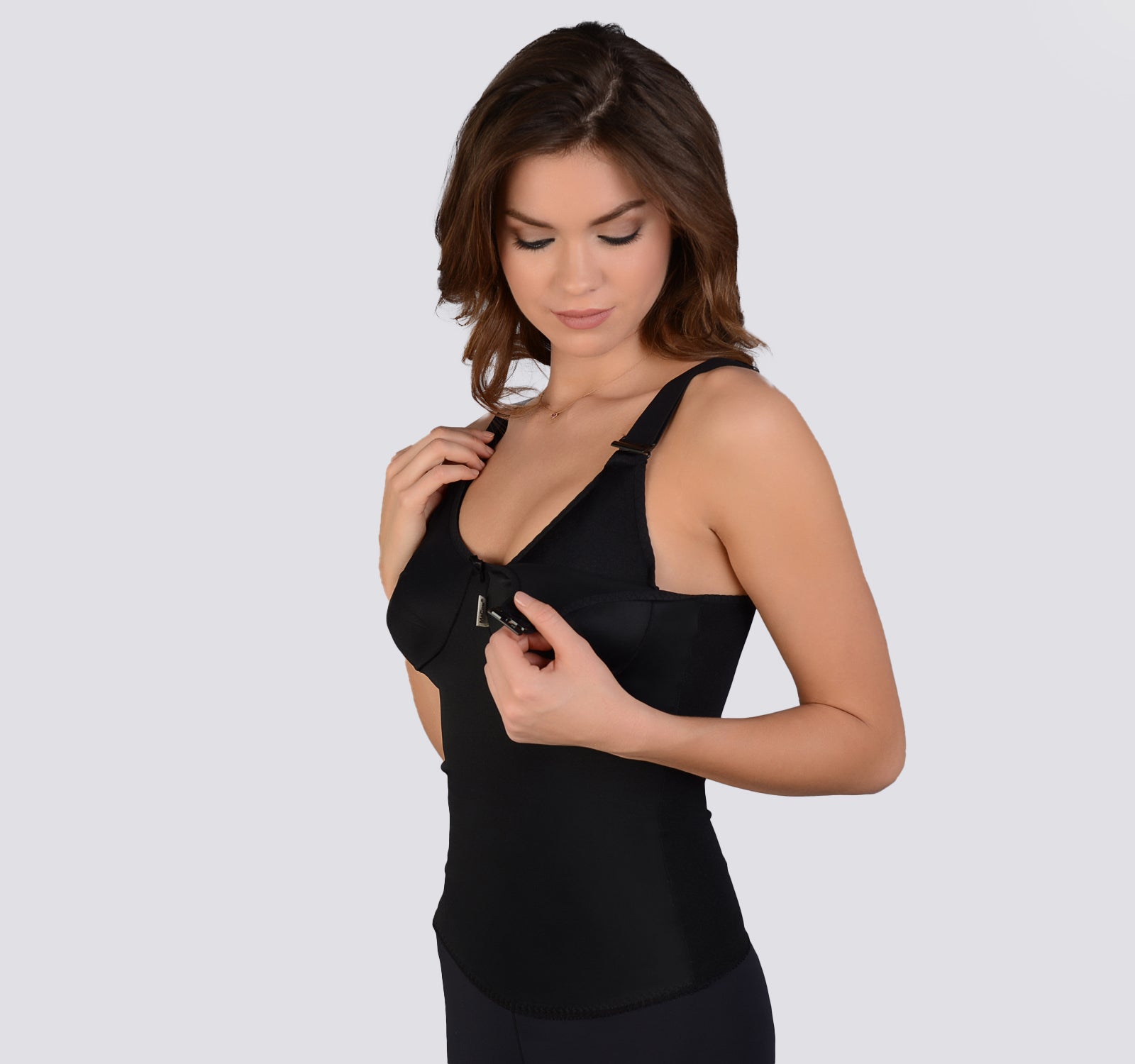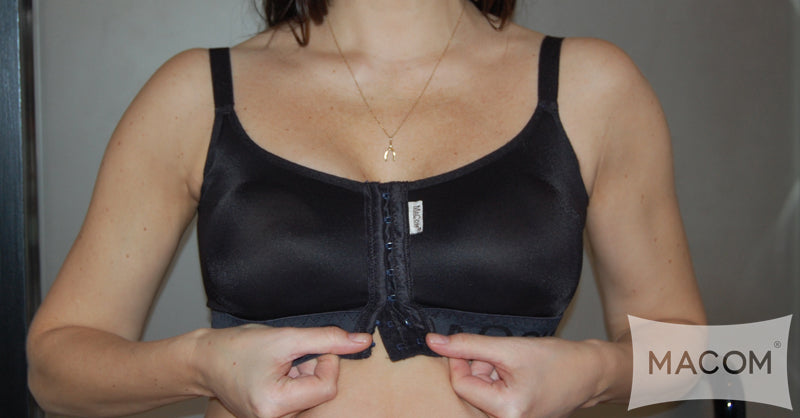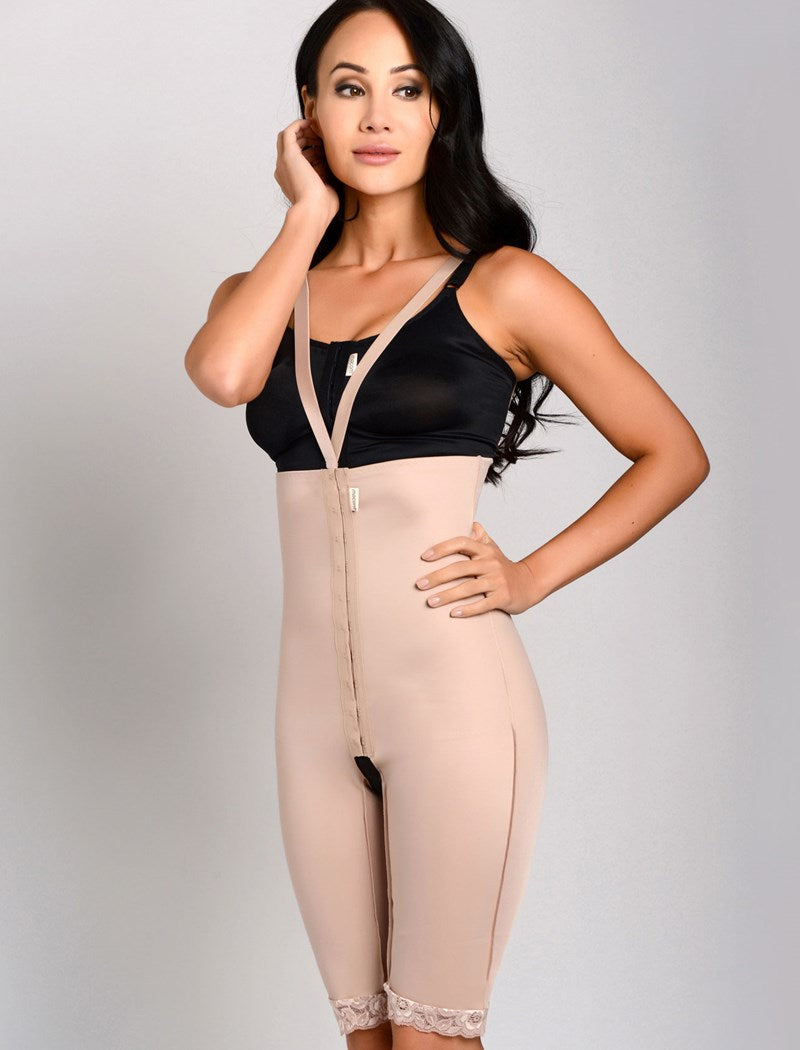Compression garments are great at aiding recovery, useful for body shaping and can make all the difference to how you feel in your body. At macom® we provide medical grade compression garments for use after cosmetic and reconstructive surgery. These garments all have specific and varied uses. To make sure you are getting the right compression garment in the right fit and for the correct purpose, we have created this comprehensive and accessible compression garments guide.
Uses Of Compression Garments
Compression garments have many uses but are primarily used for:
- Post surgery recovery
- Daily body support/shaping
- Improving circulation
Compression garments should be used directly after surgery during the (often) lengthy recovery period and then, depending on your needs, as part of your everyday life. Some compression garments will only be needed when recovering from surgery but often that will mean weeks of wear so investment in a proper compression garment is a must.
Using Compression Garments For Post Surgery Recovery
Compression garments are part of the recovery process sitting alongside medication, wound cleaning, etc. You can also get benefits from combining compression garment wearing with massages.
Post surgical compression garments are often used following plastic, cosmetic and reconstructive surgeries. In particular, they are recommended following surgery that affects significant areas of the body, such as breast augmentation, tummy tucks, liposuction and the like.
Wearing compression garments after surgery has numerous benefits, including:
- Swelling and bruising minimisation
- Blood circulation improvement
- Pain and discomfort reduction
As a result of wearing compression garments, and properly supporting your body as it heals, patients can speed up their healing time.
Stage 1 and Stage 2 Compression Garments
When choosing compression garments for post surgery, the options can be divided into two categories: Stage 1 and Stage 2 compression garments.
Stage 1 compression garments are worn directly after surgery and during the initial period of recovery – typically the first 6 weeks. They often have a firmer fit and aim to provide support to the sore and damaged parts of your body, like a second skin over any bandaging.
Stage 2 compression garments are worn after the initial recovery period, typically once you are recovered enough to be getting up and about and want support while returning to your day-to-day life. Stage 2 compression garments have different purposes and the length of time you wear them will vary depending on your surgery and how well you are recovering. They are often less firm than Stage 1 garments.
Types Of Compression Garments
There are lots of different types of compression garments. Some are individual pieces that target a specific area or part of the body and some cover most of the body. Often these individual area pieces can be used in combination with one another to get the exact support you need.
The most common types of compression garments are:
- Compression binders
- Compression bodysuits
- Compression bras
- Compression face and neck masks
- Compression girdles
- Compression leggings
- Compression shorts
- Compression sleeves
- Compression undergarments
- Compression vests
- Compression wraps
How Long Can You Wear Compression Garments For?
How long you wear a compression garment will depend on what you are using it for. Some compression garments can be worn all day and night, and some for a few hours a day. It will all depend on your circumstance.
Our compression garments are made to be as supportive and comfortable as possible, which is important so you can wear them as long and as often as needed.
How Long To Wear Post Surgery Compression Garments
How long you wear your compression garments will depend on your recovery progress and this should be discussed with your surgeon. Make sure to get expert advice, particularly if you feel any discomfort or feel you want to change which compression garments you use.
Here is some general guidance on how long and how often you can expect to be wearing compression garments.
All Day And Night In The First 4 Weeks Following Surgery
If you are wearing a compression garment to support your body following plastic surgery, you can expect to wear it all the time in the first 2-4 weeks following surgery. Round the clock support is vital because your body is in a delicate position, so anything you can do to help it recover as well and as quickly as possible is a must.
During Second Stage Recovery, You Can Wear Your Compression Garments Just During The Day
As your body heals and requires less support, and as you get up and about, you may reduce use to half of the day for another 2-4 weeks. If you recover well then you might only be wearing compression garments post-surgery for up to 6-8 weeks.
Can You Sleep In Compression Garments?
Yes, for major cosmetic and reconstructive surgery you will need to wear your compression garments day and night for at least 4 weeks. In Stage 2 and beyond, you can also use sleep compression garments, such as the Sleeping Bra, which can help with recovery and comfort. Or you can move to shapewear that supports your body at night, like CRYSTALSMOOTH® loungewear.
How To Wear Compression Garments Safely
Get A Medical Expert’s Advice
Whenever you are considering wearing compression garments, it is important you consult a medical professional to ensure you are making the right choice, and that wearing it won't have any negative impact on your body or health.
If you are recommended post surgical compression garments, you will be speaking with your surgeon ahead of your procedure and regularly during recovery. Surgeons will advise on what compression garments to choose – typically the types that will best support your body – and will tell you when to move from Stage 1 to Stage 2, based on how your body is recovering.
If you are wearing compression garments following pregnancy, such as after a C-section, you can speak to your midwife or GP about what is suitable for you. They can advise on how to ensure you are best supporting your recovery.
Wash Your Compression Garments Regularly
It is advisable to have multiple compression garments, particularly when wearing compression garments post surgery. Along with cleaning wounds and replacing dressings, you will need to regularly wash your compression garments.
Having two or more means you can keep wearing your compression garments while cleaning the others. Bear in mind that your compression garments need a cool wash and to air dry. This can take some time so having multiple garments will mean you are not left unsupported.
How To Wear Compression Garments Correctly
The fit of your compression garment is very important for your comfort and its effectiveness. This is why many macom® compression garments have adjustable features to allow you to get the right tightness. You will likely need to adjust this over time, as the swelling on your body goes down and your body heals.
When selecting your choice of compression garments, always check the sizing guides. The macom® compression garments size charts include the labelled size (S, M, L, etc) as well as the measurements for those sizes – you should always check the measurements as sizing can differ from product to product.
Compression Garments FAQs & Myth Busting
Is It Normal To Have Skin Creases Under Your Compression Garments?
You may notice skin creases under your compression garments following procedures, particularly with liposuction. Skin creases can be the result of wearing a garment that doesn't fit correctly, such as being too long.
To avoid skin creases and scarring, make sure to avoid bunching when putting on your compression garment. You can speak to your consultant or post-op advisor if you aren't sure you have the right size or fit – proper compression is important for recovery and getting the best outcome.
Can Wearing Compression Socks Cause Blood Clots?
Compression socks and stockings have been created to help promote healthy blood flow in the legs. However, wearing poor quality compression socks or wearing them incorrectly can cause the opposite, and could potentially lead to blood clots. Learn more about how and why.
Why Choose macom® Compression Garments
Compression garments vary in quality from brand to brand. Choosing the best compression garments will have a significant impact on their performance and how it helps your body.
macom® compression garments are some of the best because:
- They are 100% latex-free
- They are hypoallergenic
- They have outward facing seams to avoid any rubbing on the skin
- They are double-skinned for maximum benefit and protection

